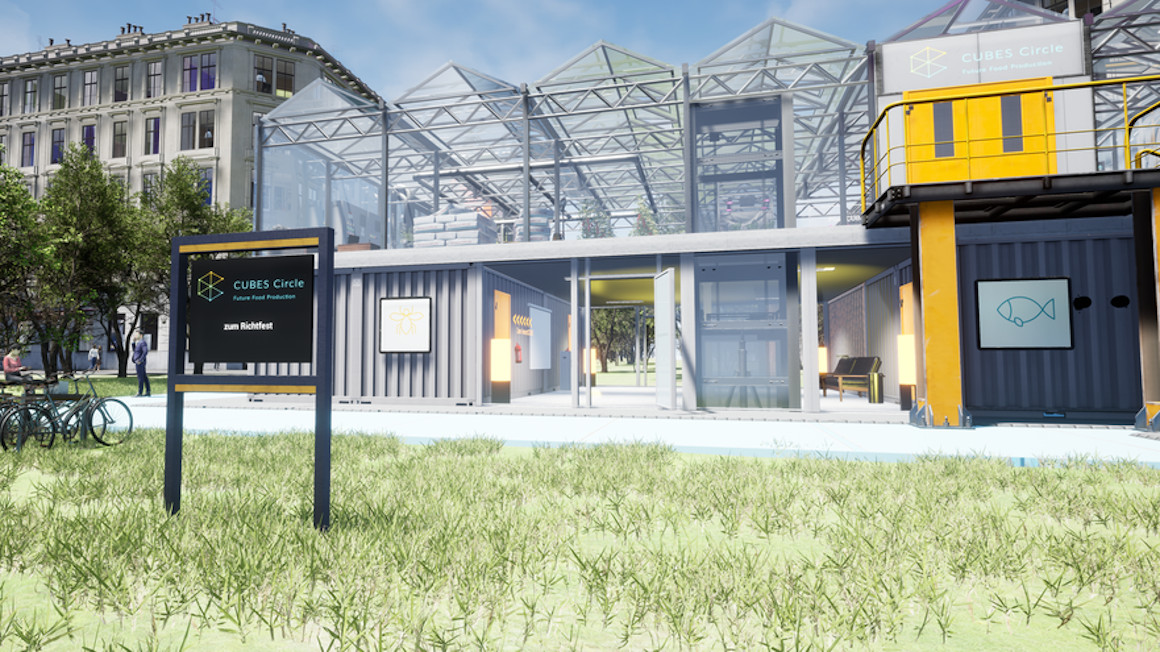CUBES Circle: Research building presented
The construction of the CUBES Circle research facility has taken an important step forward: The shell of the building has now been unveiled on HU Berlin's Dahlem campus. The circulation system for urban food production is scheduled for completion in the fall.

What will food production look like in the future? Already today, more people live in cities than in the countryside. However, the majority of food is produced in rural areas. Due to climate change, however, there is less and less land that is suitable for growing food. In the joint project CUBES Circle, researchers have been working on an alternative for years. Their vision is to produce food "in interconnected, communicating and standardized production modules" known as CUBES - where it is consumed - in the city.
Redefining food production in the city
On April 14, the building of the new research facility CUBES Circle on the Dahlem campus of Humboldt-Universität zu Berlin in Lentzeallee was officially opened. Among the guests was the Parliamentary State Secretary at the Federal Ministry of Education and Research, Stefan Müller. "Our global community faces the major challenge of reliably supplying up to ten billion people with healthy food in the future, while more and more people will be living in cities," says project leader Christian Ulrichs from the Albrecht Daniel Thaer Institute at Humboldt-Universität zu Berlin and spokesperson for the collaborative project. "We can only succeed in this if we redefine food production in urban areas and transform it into a closed-loop process in which residual materials, waste heat and wastewater become components of high-quality, fresh food."
Production of plants, fish and insects in the cycle
The research facility is unique in the world. Here, the production of food via three different stages of the food chain, namely plants, fish and insects, is to be tested. The individual production units are to be set up in so-called cubes, which are stackable, standardized and interconnected and ideally operate in a closed cycle without emissions and waste materials.
Research laboratory completed by fall
"The cycle of the three modules has already been successfully simulated," reports Dieter Simon of Humboldt University in Berlin in an interview with bioökonomie.de. The building is not yet finished, because the three CUBES - fish, plant and insect - still have to be integrated and networked. According to Simon, construction of the plant CUBES will begin in April in the form of a greenhouse on the roof of the new research building. "By fall, all production modules should be integrated and interacting with each other in a closed loop," Simon says.
The research facility is a result of the CUBES Circle consortium, which is funded by the Federal Ministry of Education and Research as part of the "National Research Strategy BioEconomy 2030" in the funding line "Agricultural Systems of the Future" with a total of 7.9 million euros over five years starting in 2019. In addition to Humboldt-Universität, the collaborative project involves: Leibniz Institute of Freshwater Ecology and Inland Fisheries, Technische Universität Berlin, Technische Universität Braunschweig, Technische Universität Chemnitz, Geisenheim University of Applied Sciences, Julius Kühn Institute and Weihenstephan-Triesdorf University of Applied Sciences.
bb


